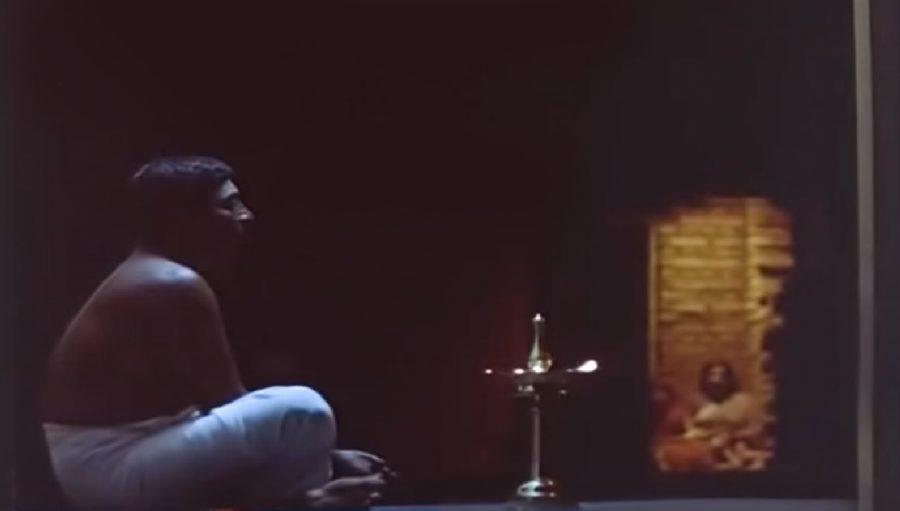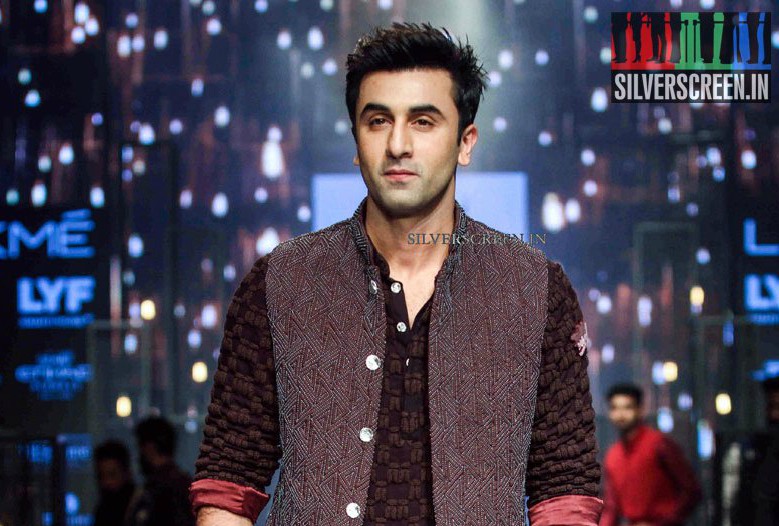KR Mohanan’s 1992 indie drama Swaroopam is a politically charged work that foresees the fate of a third world nation that is caught between the notion of a glorious past and a present that calls for pragmatism.
Swaroopam, filmmaker KR Mohanan’s Malayalam indie drama was made in 1992, the year republic India witnessed one of the most momentous incidents in its history – the demolition of the Babri Masjid, the waves of which still resonates in the political discourse of the country. The film, Mohanan’s swansong, has a seemingly simple plot, and is set in a serene Kerala village cut off from the din of the country’s political landscape. However, its eloquent subtext compels the audience to see beyond what is on screen. Through the tale of a man who distances himself from his present and goes in pursuit of a past to get in touch with his real identity, the film foresees the fate of a third world nation caught between the notion of a glorious past (which could be a mythological construct) and a present that calls for pragmatism.
Protagonist Shekharan (Sreenivasan) is a farmer who lives in an unfinished house in the middle of a coconut orchard with his wife Malathi (Sandhya Rajendran) and two daughters. The initial sequences of the film revolve around this house and the compound, documenting the couple’s daily routine that’s a mix of idyll and rural drabness. There are a cow and a calf in a shed in the backyard, and a girl from the neighborhood who comes to buy milk every morning. There is a poultry pen in the courtyard, and an invisible fox that jolts Malathi out of her slumber on some nights. A toddy-tapper from the neighbourhood visits Shekharan. There is little else. Things take a turn when a strange old man named Karuppan lands at Shekharan’s door step, unravelling the stories of his ancestral family and the forefathers who, the man claims, amassed wealth and prosperity with the blessings of an ancestral deity, Muthappan.
Swaroopam is an important work, yet terribly overlooked, much like Mohanan’s contribution to Malayalam cinema. It possesses a distinct style and aesthetics that places substance over style. The background score, composed by L Vaidyanathan, for one, is minimalist, never dictating emotions but always setting the stage. At several points, the unfinished brick house of the family becomes a metaphor of Shekharan himself. “Why don’t you finish the construction of your house?” asks Karuppan when he calls on him the first time. “I will, when I have the money,” answers Shekharan. But, that is not what the old man means. The house is a motif of Shekharan’s life and his self (swaroopam) that he attempts to rebuild through a spiritual quest. As he stops looking for work and confines himself to prayers and meditation in order to please Muthappan – a transformation which could also be interpreted as a descend into neurosis – Malathi has to step up and look for practical ways to keep the household running. She decides that no matter what, the daughters shouldn’t drop out of school. The woman displays relentless optimism in a situation that looks bleak and dangerous. Many shots in the film’s latter half frame Malathi and the kids through the house’s broken brick walls, representing Shekharan’s inner turmoils.
Curiously, the film got a mainstream makeover in 1998. Sreenivasan wrote, directed and played the lead in a film that had a main plot uncannily similar to that of Swaroopam. Chinthavishtayaaya Shyamala, a quintessential mainstream drama revolving around a middle-class household, won the National Award for the best feature film in social issues category. The film narrates the tale of school teacher Vijayan as he drifts from one job to another, evading adult responsibilities, looking to make some quick easy money. Shyamala, his wife, has to take charge of the household as the man leaves the family and the village in spiritual quest. The transformation of Vijayan resembles that of Shekharan only peripherally. The latter’s pursuit of spirituality is portrayed like a puzzle that the man himself cannot solve. In Chinthavishtayaaya Shyamala, the protagonist gets no benefit of the doubt. Sreenivasan applies his cynicism to interpret Vijayan as a conman looking to avoid work, agreeing with the general public psyche that prefers to alienate people who suffer from complex issues.
Moreover, Swaroopam is a politically-charged work that, albeit subtly, states that the personal is always political. Sreenivasan’s work is anti-political and bourgeois in nature. Chinthavishtayaaya Shyamala stresses upon the importance of confining oneself to the individual spheres where one works and earns solely for oneself. Shekharan succumbs to mental strain when a landlord forces him to use his powers to perform black magic in order to annihilate his people, the peasants. The film doesn’t confirm the reason of his suicide (a brilliantly-staged scene). Malathi’s loud wail rises over the voices of two folk artistes singing a tune about prosperity and happiness. We see nothing, but a chilling shot of an unfinished brick house flanked by a temple. Twenty-two years down the line, the scene appears closer home than ever.
***
Also read:
The Timelessness Of Onnu Muthal Poojyam Vare
‘Before My Eyes’, Mani Kaul’s Ode To Kashmir
A Group Of Youngsters Dissect The Idea Of India In ‘I Am 20’
Star-Crossed Lovers Of Annayum Rasoolum
The Mass Appeal Of Spadikam And Aadu Thoma
‘Panam’, A Reformist Social Drama With M Karunanidhi’s Dialogues



